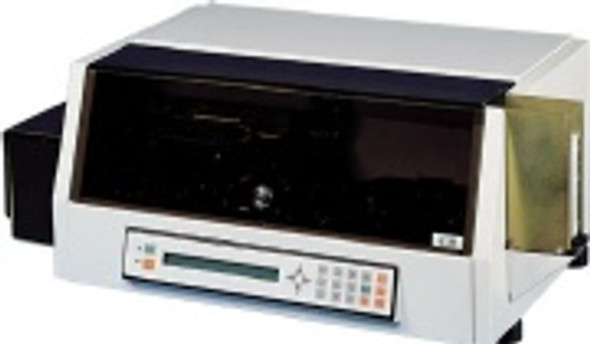Description
The It may well be argued that the age of modern photo identification began in earnest in 1965, with the introduction of the Polaroid ID-2 Land identification System. Using Polaroid¿s revolutionary instant color film, which had been introduced two years earlier, the high-volume ID-2 system produced laminated, all-photo ID cards in less than two minutes. was developed by Articles. Articles is a world leader in premium products. All ID Focuse on sourcing the most reliable products. This product was sourced by All ID because it is one of the top rated products developed by Articles.
It may well be argued that the age of modern photo identification began in earnest in 1965, with the introduction of the Polaroid ID-2 Land identification System. Using Polaroid¿s revolutionary instant color film, which had been introduced two years earlier, the high-volume ID-2 system produced laminated, all-photo ID cards in less than two minutes.
First demonstrated publicly at the New York International Photographic Exposition, The complete ID-2 system included camera, laminator and die cuter to produce as many as 250 ID cards or hanging badges per hour. In its most common configuration, each ID card included an individual¿s portrait, signature, personal data, organizational logo and issuing officer¿s signature.
In addition to being the first all-photo ID system utilizing Polaroid instant film, the camera was unique in tow other ways ¿ it had a spotlight, rather than a viewfinder, guaranteeing perfectly framed portraits when the spotlight was pointed at the subject¿s forehead; and for security purposes, it located the image for the organization¿s logo and officer¿s signature on a removable ¿validation plate,¿ preventing complete cars from being made when the plate was removed.
After the photograph was taken, the Polaroid instant film was pulled from the camera and allowed to develop for 10 seconds when using black-and white film or 60 seconds for color prints. The film was peeled apart, die cut, encased in plastic and inserted into a heat and pressure laminator.
New with this system was the special plastic pouch used to encase the ID card and he pressure/heat laminating process while the film surface was still wet. The see-trough front side of the laminate was a transparent butyrate material that molecularly bounded with the surface of the film. The other side was a white vinyl material with a pressure sensitive adhesive surface. An attempt to open the laminated card destroyed the image.
Less than two minutes after taking the picture the finished, ready-to-use color ID card emerged from the laminator.
First user of the ID-2 system were the Pentagon, where 60,ooo civilian and military personnel received new ID cards for access to secure areas, and the Hydro-electric Power Commission of Ontario, Canada, where 15,000 employees were issued Polaroid ID cards. When North Carolina purchased the system it became the first stat in the country to issue Polaroid instant photo drivers¿ licenses.
At the same time that the ID-2 was introduced, Polaroid also began marketing the Polaroid Land Portrait Camera (Model 600). The Model 600 was a novel composite card camera whose key selling feature predated by 25 years one of the primary features of current electronic identification technology ¿ the ability to select a portrait from a group of different poses.
The Model 600 has six independently operated lenses and was equipped with a removable Polaroid 4x5 Land Film Holder. Although it could expose both black-and white and color instant print film, the Model 600 was primarily designed to exposed Type 55 Positive/Negative instant black-and-white film.
Introduced in 1961, Type 55 P/N film produces both a 4x5-inch instant print and a high-resolution, reusable negative. The operator of the Model 600 camera could take as many as six different portraits of the subject on the same sheet of instant film, give the subject the opportunity to select the most flattering pose and then use the negative to make prints of the selected pose, virtually assuring customer satisfaction.









